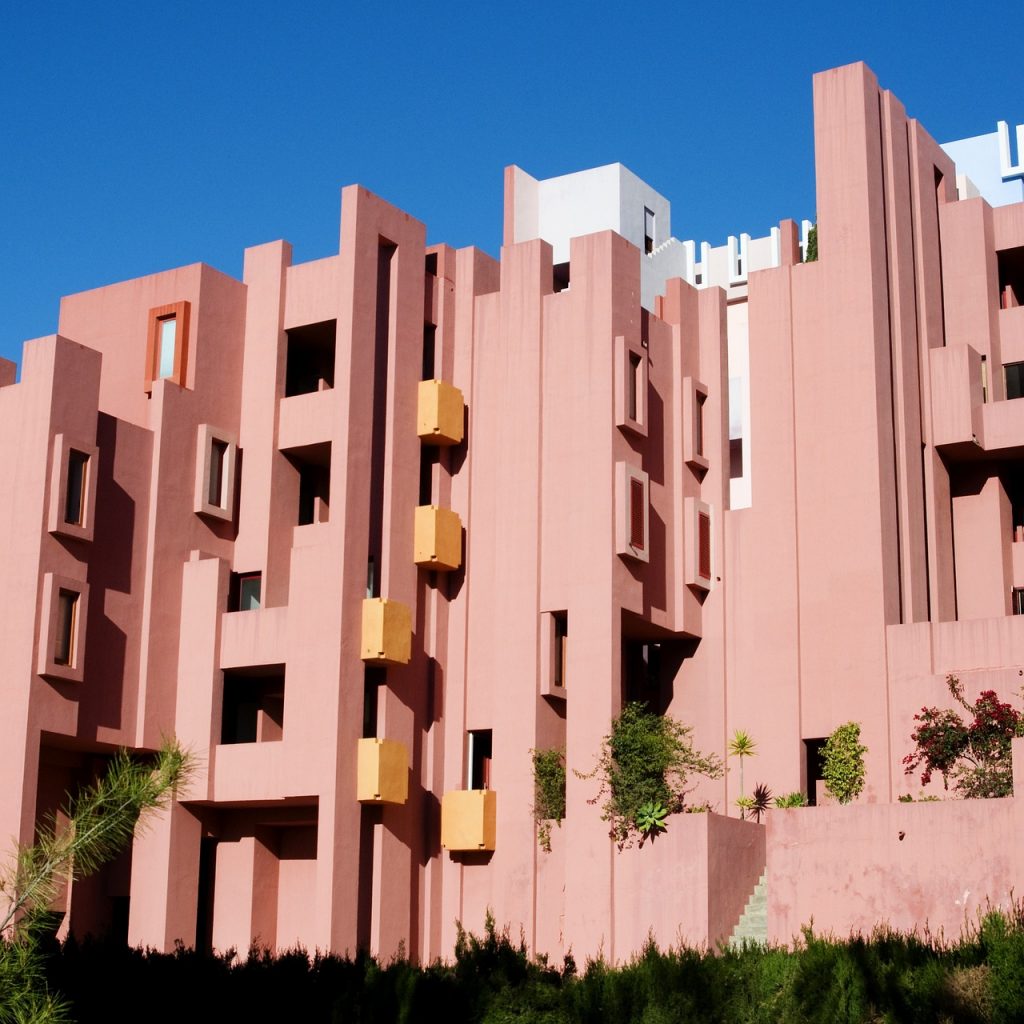Nestled on the eastern coast of Spain, the small town of Calpe stands as a beacon of architectural innovation, harmoniously blending traditional Spanish elements with the avant-garde. This enchanting seaside resort, overshadowed by the iconic Peñón de Ifach, is not just a haven for beach lovers and climbers but also a canvas displaying centuries of architectural evolution. In this detailed exploration, we uncover how Calpe's architecture embodies a unique fusion of tradition and modernity, reflecting the town's rich history while embracing the future.
Historical Foundations and Traditional Influences
Calpe's architectural journey begins in the depths of history, with Iberian settlements, Roman villas, and Islamic fortresses laying the first stones of its cultural heritage. The Old Town, a labyrinth of narrow, cobblestone streets, echoes the medieval past. Here, the traditional Spanish white-washed houses, adorned with colorful doors and bougainvillea, capture the essence of Mediterranean charm. This area, particularly around the ancient church plaza, is a vivid testament to Calpe's ability to preserve its historical identity amidst change.
The influence of the Moors is palpable in the agricultural terraces and irrigation systems that sculpt the surrounding landscape, showcasing an architectural prowess deeply intertwined with the natural environment. The Torreó de la Peça, a 15th-century tower, stands as a monument to Calpe's defensive strategies against pirate invasions, highlighting the blend of functionality and aesthetic in its architectural tradition.
Transition to Modernity: The Rise of Tourism
The latter half of the 20th century marked a pivotal shift in Calpe's architectural narrative, driven by the burgeoning tourism industry. The town's stunning coastline and favorable climate attracted not just visitors but also visionary architects who saw Calpe as a blank slate for modernist experimentation. The resulting constructions did not erase the traditional landscape but rather added a new layer to its storied fabric.
Perhaps the most emblematic figure in this transformation is Ricardo Bofill, whose La Muralla Roja (The Red Wall) apartment complex, completed in 1973, is a masterpiece of postmodern architecture. Inspired by the North African Kasbah, this fortress-like structure defies conventional design norms with its bold colors, geometric forms, and interconnected terraces and pathways, creating a striking contrast yet surprising harmony with the blue Mediterranean backdrop.
Embracing Contemporary Innovation
Today, Calpe's skyline is a mosaic of historical layers, with cutting-edge buildings standing shoulder to shoulder with ancient structures. The town hall, an example of sleek, contemporary design, uses glass and steel to create a sense of openness and transparency, reflecting a modern governance approach. Meanwhile, local architects continue to explore sustainable building techniques, incorporating solar panels, green roofs, and eco-friendly materials, aligning with the global shift towards environmental consciousness.
The promenade along the Arenal-Bol beach is another testament to Calpe's architectural evolution. Here, modern sculptures, innovative lighting, and landscaped areas enhance the natural beauty of the coastline, providing a space for both leisure and artistic expression. This area symbolizes Calpe's commitment to creating a built environment that serves the community and visitors alike, blending functionality with aesthetic appeal.
The Cultural Quotient: Museums and Public Spaces
Calpe's architecture is not confined to residential and commercial buildings but extends into the realm of cultural institutions. The Museum of Archaeology and the Museum of Festivals illustrate how modern design techniques can be used to showcase the town's historical and cultural narratives. These spaces employ interactive exhibits housed within structures that reflect contemporary architectural thought, yet they are seamlessly integrated into the fabric of the town, bridging past and present.
Public spaces in Calpe are designed with a deep understanding of the town's social dynamics and climatic conditions. Plazas shaded by ancient trees, outfitted with modern seating and water features, serve as communal hubs where tradition and modernity coexist. These areas are not just thoroughfares but destinations in themselves, offering a glimpse into the everyday life of Calpe's residents and the town's architectural ethos.
The Future of Calpe's Architecture
As Calpe looks to the future, the town faces the challenge of balancing growth with sustainability, innovation with preservation. The forward momentum in architectural thought suggests a trend towards adaptive reuse of historical buildings, smart city technologies, and designs that prioritize pedestrian spaces. The commitment to maintaining a dialogue between the old and the new, the natural and the built environment, promises to guide Calpe's architectural development in the years to come.
Conclusion
In conclusion, the architecture of Calpe is a testament to the town's ability to honor its historical roots while embracing the possibilities of modernity. This delicate balance has not only defined its physical landscape but also shaped its cultural identity, making Calpe a unique destination for those seeking to explore the intersections of history, art, and architecture. As Calpe continues to evolve, its architecture remains a dynamic narrative of adaptation, innovation, and respect for the past, offering lessons on how tradition and modernity can coalesce to create a vibrant, sustainable future.
Frequently Asked Questions (FAQs)
What makes Calpe's architecture unique?
Calpe's architecture stands out for its seamless blend of traditional Spanish elements and modernist designs, reflecting its rich history and the influence of renowned architects like Ricardo Bofill
Can you tell me about a famous building in Calpe?
La Muralla Roja, designed by Ricardo Bofill, is a famous postmodern apartment complex known for its striking colors, geometric shapes, and resemblance to North African Kasbahs
How does Calpe preserve its architectural heritage?
Calpe preserves its architectural heritage through meticulous conservation of its Old Town, historical monuments, and integration of traditional styles into new constructions
What role does sustainability play in Calpe's contemporary architecture?
Sustainability is pivotal in Calpe's contemporary architecture, with new projects focusing on eco-friendly materials, solar energy, and green spaces to mitigate environmental impact
How do public spaces reflect Calpe's architectural ethos?
Public spaces in Calpe, designed with modern elements and respect for social dynamics, reflect the town's architectural ethos by blending functionality, beauty, and community engagement
